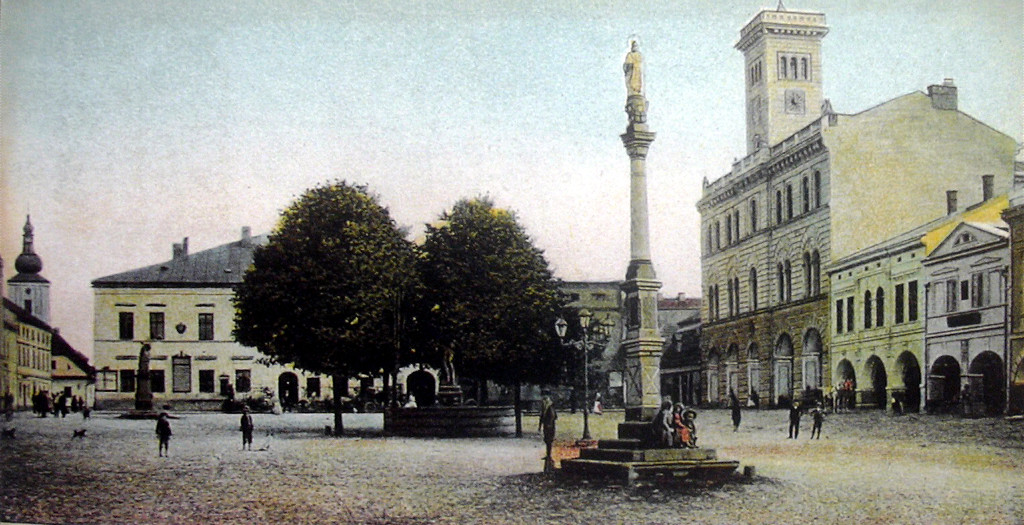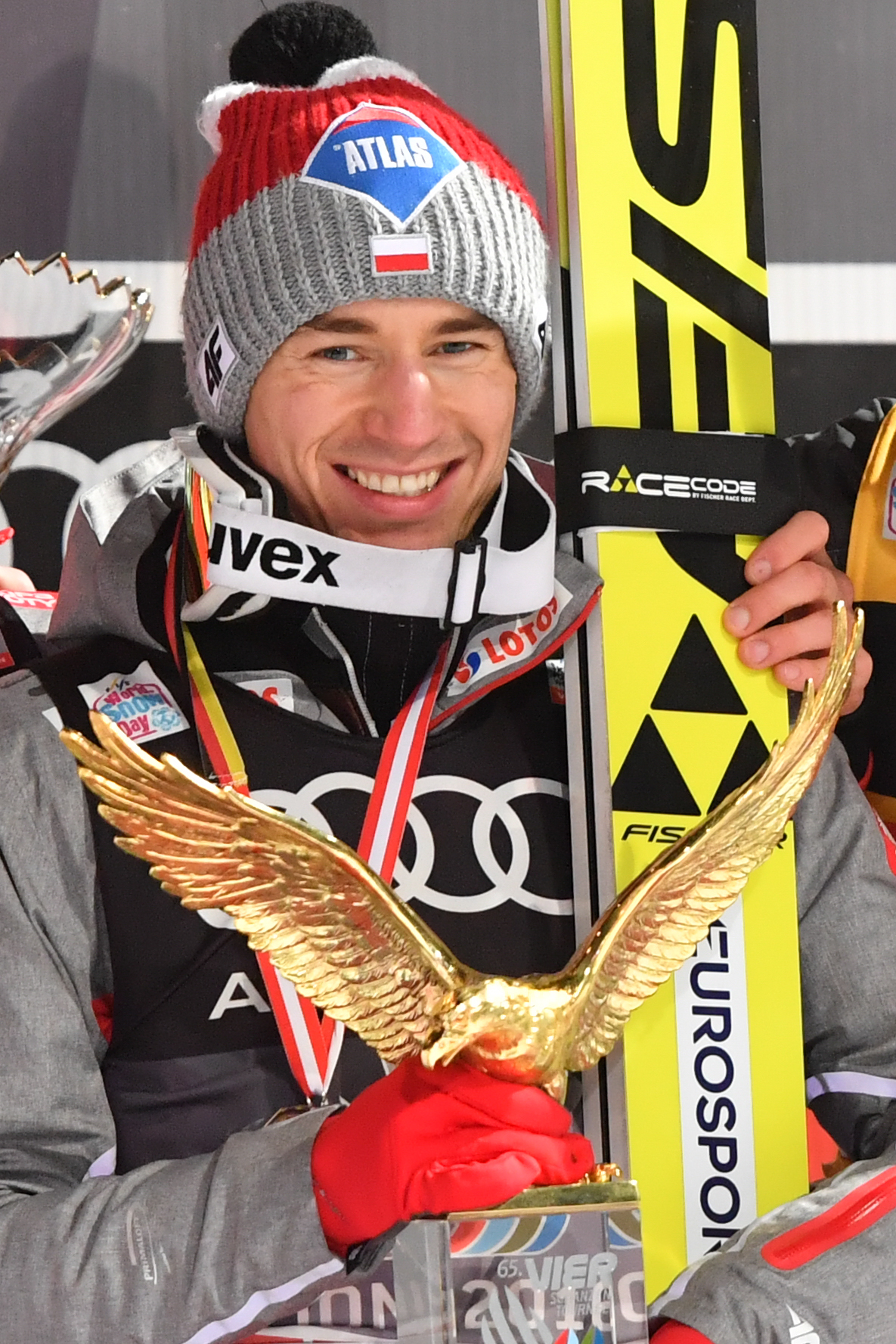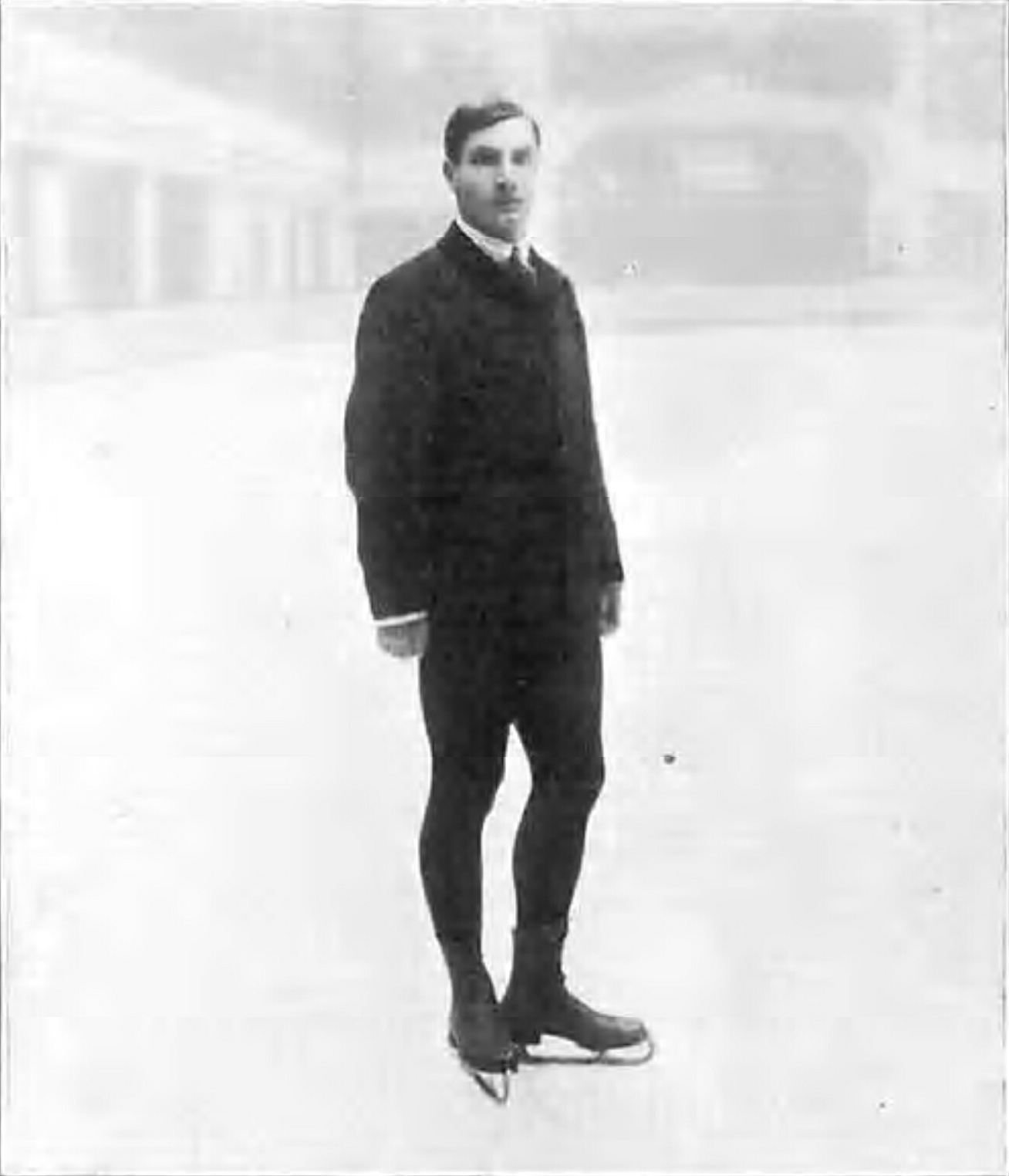|
Jiří Raška
Jiří Raška (; 4 February 1941 – 20 January 2012) was a Czechoslovakian ski jumper. He is regarded as the most famous Czech ski jumper of the 20th century. Early life He was born in Frenštát pod Radhoštěm in 1941. His father died of leukaemia when Jiří Raška was nine years old, leaving his mother to raise four children on her own. His interest in winter sports was not surprising. His cousin and uncle, both active jumpers, took him as their disciple. ''"We were saying that children in Frenštát are born with skis on their feet,"'' Raška said in the interview for Czech newspaper Lidové noviny. Raška was however also active in other sports, like football, cycling and handball. Introduction to ski jumping As a young jumper he got into coach Zdeněk Remsa's legendary group, the “Remsa Boys”. When military service on Šumava threatened Raška’s budding career, Remsa arranged his entrance into the military sports club Dukla Liberec. In 1964 he travelled to ... [...More Info...] [...Related Items...] OR: [Wikipedia] [Google] [Baidu] |
Frenštát Pod Radhoštěm
Frenštát pod Radhoštěm (; german: Frankstadt (unter dem Radhoscht)) is a town in Nový Jičín District in the Moravian-Silesian Region of the Czech Republic. It has about 11,000 inhabitants. The historic town centre is well preserved and is protected by law as an urban monument zone. Administrative parts Frenštát pod Radhoštěm is made up of one administrative part. Geography Frenštát pod Radhoštěm lies at the confluence of the Lomná and Lubina rivers. The town is located in the Moravian-Silesian Foothills and extends into the Moravian-Silesian Beskids at the western tip. The mountain of Radhošť, contained in the name of the town, is located south of the town outside the municipal territory. History The first written mention of Frenštát is from 1382. It was probably founded during the colonization between 1293 and 1316. In 1473, tt was first referred to as a market town. In the 16th century, it became a prosperous market town with developed trade and handicraf ... [...More Info...] [...Related Items...] OR: [Wikipedia] [Google] [Baidu] |
Ski Jump
Ski jumping is a winter sport in which competitors aim to achieve the farthest jump after sliding down on their skis from a specially designed curved ramp. Along with jump length, competitor's aerial style and other factors also affect the final score. Ski jumping was first contested in Norway in the late 19th century, and later spread through Europe and North America in the early 20th century. Along with cross-country skiing, it constitutes the traditional group of Nordic skiing disciplines. The ski jumping venue, commonly referred to as a ''hill'', consists of the jumping ramp (''in-run''), take-off table, and a landing hill. Each jump is evaluated according to the distance traveled and the style performed. The distance score is related to the construction point (also known as the ''K-point''), which is a line drawn in the landing area and serves as a "target" for the competitors to reach. The score of each judge evaluating the style can reach a maximum of 20 points. The j ... [...More Info...] [...Related Items...] OR: [Wikipedia] [Google] [Baidu] |
Four Hills Tournament
The Four Hills Tournament (german: link=no, Vierschanzentournee) or the German-Austrian Ski Jumping Week (german: link=no, Deutsch-Österreichische Skisprung-Woche) is a ski jumping event composed of four World Cup events and has taken place in Germany and Austria each year since 1953. With few exceptions, it has consisted of the ski jumping events held at Oberstdorf, Garmisch-Partenkirchen, Innsbruck and Bischofshofen, in this order. The Four Hills Tournament champion is the one who gets the most points over the four events. Unlike the World Cup ranking, however, the actual points scored during the competitions are the ones that are used to determine the winner. In 2005–06, Janne Ahonen and Jakub Janda shared the overall victory after finishing with exactly the same points total after the four competitions. In 2001–02, the anniversary 50th edition, Sven Hannawald was the first to achieve the ''grand slam'' of ski jumping, winning all four events in the same edition. In 201 ... [...More Info...] [...Related Items...] OR: [Wikipedia] [Google] [Baidu] |
1966 FIS Nordic World Ski Championships
The FIS Nordic World Ski Championships 1966 took place 17–27 February 1966 in Oslo, Norway at the Holmenkollen ski arena. This was the third time the Norwegian capital hosted this event having done so in 1930 and at the 1952 Winter Olympics. This also equaled the most times a city had hosted with Lahti, Finland (1926, 1938, 1958) and Zakopane, Poland (1929, 1939, and 1962). Men's cross-country 15 km 20 February 1966 30 km 17 February 1966 50 km 26 February 1966 4 × 10 km relay 23 February 1966 Women's cross-country 5 km 21 February 1966 10 km 19 February 1966 3 × 5 km relay 27 February 1966 Men's Nordic combined Individual 21 February 1966 Men's ski jumping Individual normal hill 19 February 1966 Individual large hill 27 February 1966 Medal table References External links FIS 1966 Cross country results [...More Info...] [...Related Items...] OR: [Wikipedia] [Google] [Baidu] |
Josef Matouš
Josef Matouš (born 6 January 1942) is a Czechoslovakian former ski jumper who competed from 1963 to 1974. He finished fourth in the individual normal hill event at the 1964 Winter Olympics in Innsbruck. Matouš's best career finish was third twice, both earned in the individual normal hill event in Oberstdorf, West Germany in 1968 and 1969. He was born in Poděbrady Poděbrady (; german: Podiebrad) is a spa town in Nymburk District in the Central Bohemian Region of the Czech Republic. It has about 14,000 inhabitants. It lies on the river Elbe. The town centre is well preserved and is protected by law as an u .... Notes External links * * 1942 births Living people People from Poděbrady Ski jumpers at the 1964 Winter Olympics Czech male ski jumpers Czechoslovak male ski jumpers Olympic ski jumpers of Czechoslovakia Sportspeople from the Central Bohemian Region {{CzechRepublic-skijumping-bio-stub ... [...More Info...] [...Related Items...] OR: [Wikipedia] [Google] [Baidu] |
Innsbruck
Innsbruck (; bar, Innschbruck, label=Bavarian language, Austro-Bavarian ) is the capital of Tyrol (state), Tyrol and the List of cities and towns in Austria, fifth-largest city in Austria. On the Inn (river), River Inn, at its junction with the Wipptal, Wipp Valley, which provides access to the Brenner Pass to the south, it had a population of 132,493 in 2018. In the broad valley between high mountains, the so-called North Chain in the Karwendel Alps (Hafelekarspitze, ) to the north and Patscherkofel () and Serles () to the south, Innsbruck is an internationally renowned winter sports centre; it hosted the 1964 Winter Olympics, 1964 and 1976 Winter Olympics as well as the 1984 Winter Paralympics, 1984 and 1988 Winter Paralympics. It also hosted the first 2012 Winter Youth Olympics, Winter Youth Olympics in 2012. The name means "bridge over the Inn". History Antiquity The earliest traces suggest initial inhabitation in the early Stone Age. Surviving Ancient Rome, pre-Roman pla ... [...More Info...] [...Related Items...] OR: [Wikipedia] [Google] [Baidu] |
Winter Olympic Games
The Winter Olympic Games (french: link=no, Jeux olympiques d'hiver) is a major international multi-sport event held once every four years for sports practiced on snow and ice. The first Winter Olympic Games, the 1924 Winter Olympics, were held in Chamonix, France. The modern Olympic Games were inspired by the ancient Olympic Games, which were held in Olympia, Greece, from the 8th century BC to the 4th century AD. Baron Pierre de Coubertin founded the International Olympic Committee (IOC) in 1894, leading to the first modern Summer Olympic Games in Athens, Greece in 1896. The IOC is the governing body of the Olympic Movement, with the Olympic Charter defining its structure and authority. The original five Winter Olympic Sports (consisting of nine disciplines) were bobsleigh, curling, ice hockey, Nordic skiing (consisting of the disciplines military patrol, cross-country skiing, Nordic combined, and ski jumping), and skating (consisting of the disciplines figure skating and ... [...More Info...] [...Related Items...] OR: [Wikipedia] [Google] [Baidu] |
Dukla Liberec
Dukla is a town and an eponymous municipality in southeastern Poland, in the Subcarpathian Voivodeship. As of December 2021, the town has a population of 2,017. The total area of the commune is . Dukla belongs to Lesser Poland, and until the Partitions of Poland it was part of Biecz County, Kraków Voivodeship. Location The town lies on the Jasiołka river, at the foot of the Cergowa mountain (716 meters above sea level), in the Low Beskids. Dukla is located south of Krosno, along European route E371, which goes from Radom to Presov. The Dukla mountain pass is located in the Carpathians, a few kilometers south of the town, on the border with Slovakia and was a scene of a major battle in 1944. History First Slavic settlers appeared in the area of Dukla probably in the 5th or 6th century. It is not known which tribe settled here, and most probably, Dukla belonged for some time to Great Moravia, although it is not documented. Some time in the 10th century, Dukla was annex ... [...More Info...] [...Related Items...] OR: [Wikipedia] [Google] [Baidu] |
Šumava
The Bohemian Forest, known in Czech as Šumava () and in German as Böhmerwald, is a low mountain range in Central Europe. Geographically, the mountains extend from Plzeň Region and South Bohemia in the Czech Republic to Austria and Bavaria in Germany, and form the highest truncated uplands of the Bohemian Massif, up to 50 km wide. They create a natural border between the Czech Republic on one side and Germany and Austria on the other. Names and etymology For political reasons, the Bohemian and German sides have different names in their languages: in Czech, the Bohemian side is called ''Šumava'' and the Bavarian side ''Zadní Bavorský les'' ( en, Rear Bavarian Forest), while in German, the Bohemian side is called ''Böhmerwald'' ( en, Bohemian Forest), and the Bavarian side ''Bayerischer Wald'' ( en, Bavarian Forest). In Czech, ''Šumava'' is also used as a name for the entire region in Bohemia and Germany. The designation ''Šumava'' has been attested in the late 1 ... [...More Info...] [...Related Items...] OR: [Wikipedia] [Google] [Baidu] |
Zdeněk Remsa
Zdeněk Remsa (29 December 1928 – 22 June 2019) was a Czech ski jumper. He competed at the 1948 Winter Olympics
The 1948 Winter Olympics, officially known as the V Olympic Winter Games (german: V. Olympische Winterspiele; french: Ves Jeux olympiques d'hiver; it, V Giochi olimpici invernali; rm, V Gieus olimpics d'enviern) and commonly known as St. Moritz ... .
References External ...
|
Team Handball
Handball (also known as team handball, European handball or Olympic handball) is a team sport in which two teams of seven players each (six outcourt players and a goalkeeper) pass a ball using their hands with the aim of throwing it into the goal of the other team. A standard match consists of two periods of 30 minutes, and the team that scores more goals wins. Modern handball is played on a court of , with a goal in the middle of each end. The goals are surrounded by a zone where only the defending goalkeeper is allowed; goals must be scored by throwing the ball from outside the zone or while "diving" into it. The sport is usually played indoors, but outdoor variants exist in the forms of field handball, Czech handball (which were more common in the past) and beach handball. The game is fast and high-scoring: professional teams now typically score between 20 and 35 goals each, though lower scores were not uncommon until a few decades ago. Body contact is permitted for the def ... [...More Info...] [...Related Items...] OR: [Wikipedia] [Google] [Baidu] |
Cycling
Cycling, also, when on a two-wheeled bicycle, called bicycling or biking, is the use of cycles for transport, recreation, exercise or sport. People engaged in cycling are referred to as "cyclists", "bicyclists", or "bikers". Apart from two-wheeled bicycles, "cycling" also includes the riding of unicycles, tricycles, quadricycles, recumbent and similar human-powered vehicles (HPVs). Bicycles were introduced in the 19th century and now number approximately one billion worldwide. They are the principal means of transportation in many parts of the world, especially in densely populated European cities. Cycling is widely regarded as an effective and efficient mode of transportation optimal for short to moderate distances. Bicycles provide numerous possible benefits in comparison with motor vehicles, including the sustained physical exercise involved in cycling, easier parking, increased maneuverability, and access to roads, bike paths and rural trails. Cycling also offers a r ... [...More Info...] [...Related Items...] OR: [Wikipedia] [Google] [Baidu] |

.jpg)





